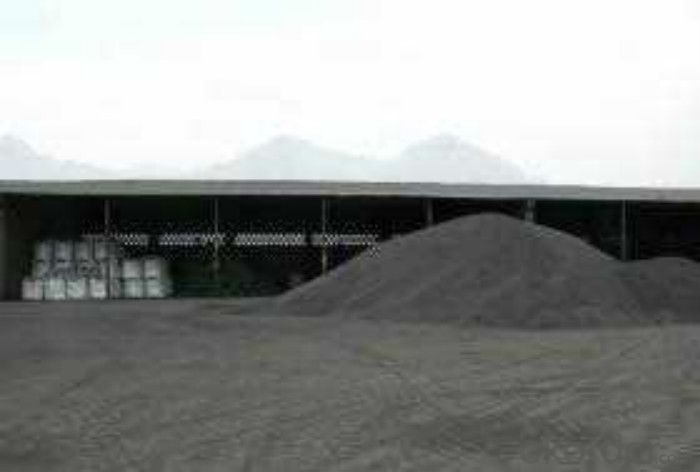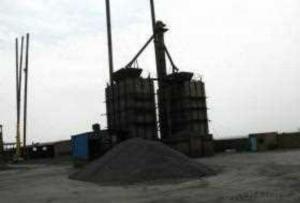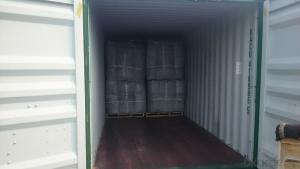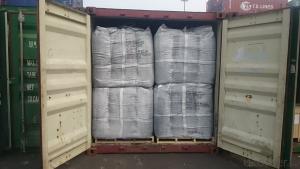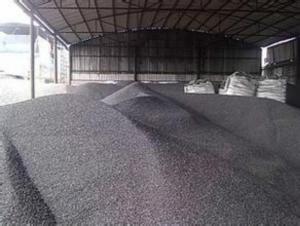GPC with lower Sulphur0.03% max in Low Ash
- Loading Port:
- Qingdao
- Payment Terms:
- TT OR LC
- Min Order Qty:
- 24 m.t.
- Supply Capability:
- 5004 m.t./month
OKorder Service Pledge
OKorder Financial Service
You Might Also Like
Introduction:
it is playing more and more important role in the industryGPC has good characteristics with low ash, low resistivity, low sulphur, high carbon and high density. It is the best material for high quality carbon products. It is used as carbon additive in steel industry or fuel.
Features:
1.Our strong team provide you reliable service that make you feel purchasing is more easier
4. Highest standard of integrity. Guarantee customer's benefit.
5. Supplying Pet Coke, Met coke, Foundry Coke, Carbon Raiser etc.
Specifications:
F.C.% | 95MIN | 94MIN | 93MIN | 92MIN | 90MIN | 85MIN | 84MIN |
ASH % | 4MAX | 5MAX | 6 MAX | 6.5MAX | 8.5MAX | 12MAX | 13MAX |
V.M.% | 1 MAX | 1MAX | 1.0MAX | 1.5MAX | 1.5MAX | 3 MAX | 3 MAX |
SULFUR % | 0.3MAX | 0.3MAX | 0.3MAX | 0.35MAX | 0.35MAX | 0.5MAX | 0.5MAX |
MOISTURE % | 0.5MAX | 0.5MAX | 0.5MAX | 0.5MAX | 0.5MAX | 1MAX | 1MAX |
Pictures
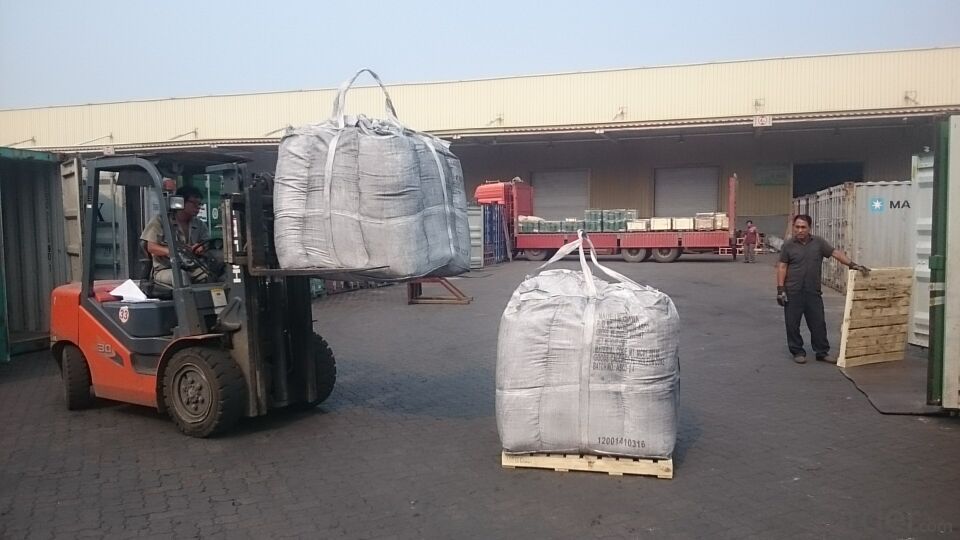
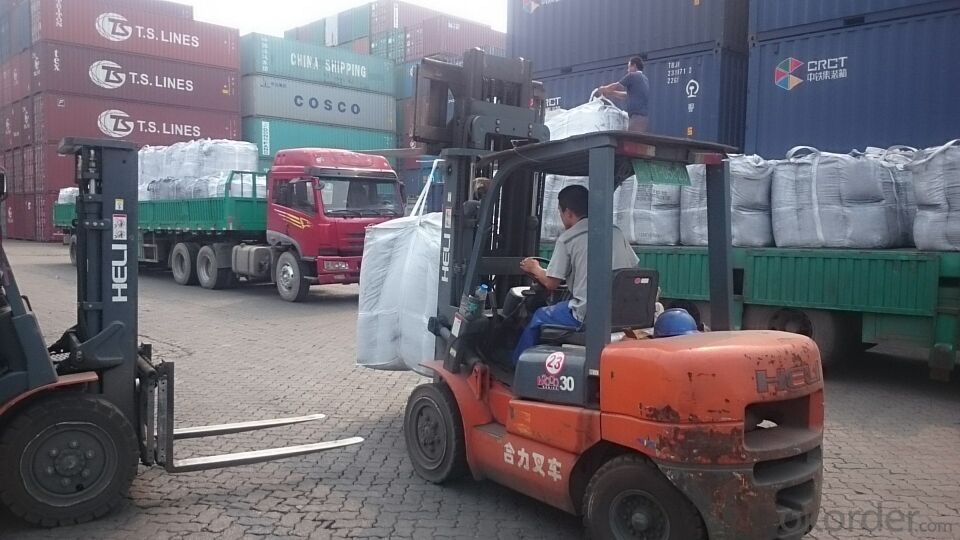
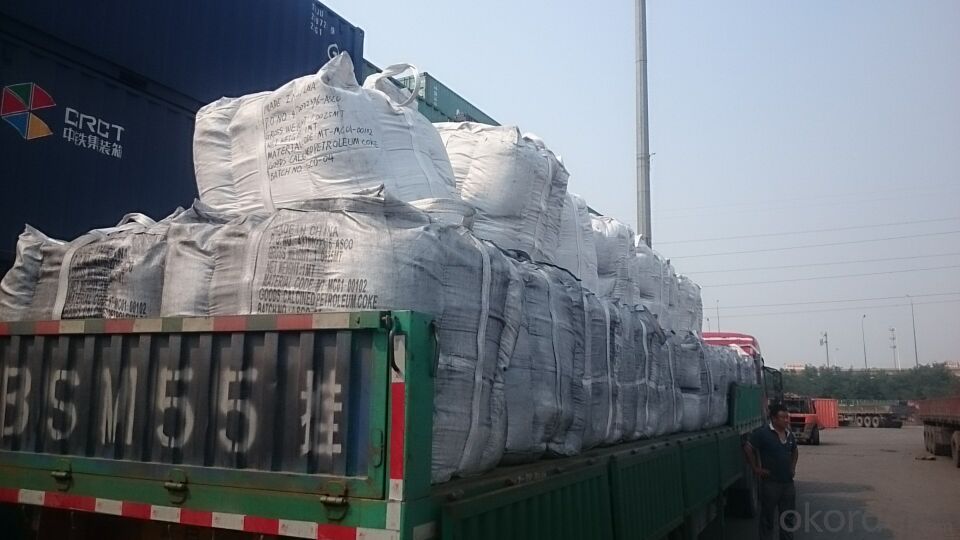
FAQ:
1. Your specification is not very suitable for us.
Please offer us specific indicators by TM or email. We will give you feedback as soon as possible.
3. Do you provide samples?
Yes, samples are available for you to check our quality.
Samples delivery time will be about 3-10 days.
4. What about the lead time for mass product?
The lead time is based on the quantity, about 7-15 days. For graphite product, apply Dual-use items license need about 15-20 working days.
5. What is your terms of delivery?
We accept FOB, CFR, CIF, EXW, etc. You can choose the most convenient way for you. Besides that,
we can also shipping by Air and Express.
6. Product packaging?
We are packed in bulk ship or in ton bag or placing in container or according to your requirements.
7. Notice
please note that the price on Alibaba is a rough price. The actual price will depends on raw materials, exchange rate wage and your order quantity .Hope to cooperation with you, thanks !
- Q: There is a graphite mine, looking for three experts engaged in mineral processing industry asked. They say earthy graphite, and the answer to the taste is quite different. Some say that the fixed carbon content of 15, and some say graphite grade 90%. The same sample. Some people say that very valuable, and some say that the grade is too low, worthless. I'm all confused. What do you mean by graphite grade and fixed carbon?
- The taste of graphite powder refers to its purity, that is, the amount of carbon; fixed carbon content refers to the removal of water, ash and volatile residues, it is an important indicator of the use of coal. The two are essentially different
- Q: How do fossil fuels release carbon dioxide when burned?
- By burning fossil fuels, carbon dioxide (CO2) is released as a byproduct. This occurrence is a result of the chemical makeup of fossil fuels. Fossil fuels, including coal, oil, and natural gas, primarily consist of hydrocarbons, which are compounds made up of carbon and hydrogen atoms. During the process of combustion, these hydrocarbons undergo a reaction with oxygen (O2) present in the air, leading to the production of carbon dioxide and water vapor. The chemical equation for the combustion of a hydrocarbon fuel, like the octane found in gasoline, can be represented as follows: C8H18 + 12.5O2 → 8CO2 + 9H2O In this reaction, each molecule of octane (C8H18) combines with 12.5 molecules of oxygen (O2) to yield 8 molecules of carbon dioxide (CO2) and 9 molecules of water (H2O). The carbon atoms contained within the hydrocarbons of fossil fuels bond with oxygen to create carbon dioxide. This release of carbon dioxide into the atmosphere is what contributes to the greenhouse effect and global warming. The combustion of fossil fuels serves as a significant source of anthropogenic (human-caused) carbon dioxide emissions, making up a substantial portion of the greenhouse gases discharged into the atmosphere. It is important to acknowledge that the burning of fossil fuels also results in the release of other harmful pollutants, such as sulfur dioxide (SO2) and nitrogen oxides (NOx), which have detrimental effects on air quality and human health. To address the adverse impacts of fossil fuel combustion, endeavors are underway to develop cleaner and more sustainable sources of energy, such as renewable energy, in order to diminish our reliance on fossil fuels and decrease carbon dioxide emissions.
- Q: How does carbon affect the formation of haze?
- Haze formation is significantly influenced by carbon, as it has the ability to interact with other pollutants and atmospheric conditions. When carbon-containing compounds, such as emissions from fossil fuels or organic matter from wildfires, are released into the atmosphere, they undergo chemical reactions with gases like nitrogen oxides and volatile organic compounds. These reactions lead to the creation of tiny particles called secondary organic aerosols (SOAs), which are suspended in the air. The presence of these SOAs can contribute to the formation of haze by scattering and absorbing sunlight, resulting in reduced visibility and a hazy appearance. Additionally, the carbon particles act as nuclei for condensation, attracting other pollutants and water vapor, ultimately leading to the formation of larger particles and, consequently, haze. Moreover, the interaction between carbon and atmospheric moisture can result in the formation of secondary organic aerosol particles, further contributing to haze formation. Furthermore, carbon particles also play a role in the formation of photochemical smog, a specific type of haze characterized by high levels of ozone. Carbon-containing pollutants can react with sunlight and other pollutants, leading to the production of ozone. The presence of ozone, combined with other pollutants, contributes to the formation of haze and decreases air quality. To summarize, the impact of carbon on haze formation is significant, as it contributes to the creation of secondary organic aerosols, acts as condensation nuclei, and promotes the production of ozone. Understanding the role of carbon in haze formation is crucial for implementing effective measures to control air pollution and mitigate the adverse effects of haze on human health and the environment.
- Q: How is carbon stored in the Earth's crust?
- Carbon is stored in the Earth's crust through various geological processes such as the formation of sedimentary rocks, the burial of organic matter, and the formation of fossil fuels. These processes involve the accumulation and preservation of carbon-rich material over millions of years, resulting in the storage of carbon in the form of minerals, organic compounds, and hydrocarbons within the Earth's crust.
- Q: The dangers of grilled BBQ on humansWhat are the dangers of a charcoal barbecue?
- This study shows that burnt meat also has an effect on the human body, although the amount of conversion quantity and the human animal, was about 1/20000, the ratio is very low, but also can avoid the best to avoid as far as possible, especially in old age people.In fact, the biggest problem is not barbecue food, but added to food oil juice, sauce, the oil dripping on the charcoal, heating will produce carcinogenic substances, attached to the barbecue, grilled Dried tofu, grilled corn, fish and so on were eaten roasted in the human body, long-term consumption down, have a higher risk of cancer some. In addition, the flame will make protein to produce chemical changes into highly toxic carcinogenic substances called heterocyclic amines (Heterocyclic amine), often eat these substances, easily lead to the occurrence of cancer.
- Q: What is the carbon footprint of different activities?
- The carbon footprint of different activities refers to the amount of greenhouse gas emissions, particularly carbon dioxide (CO2), that are released into the atmosphere as a result of carrying out those activities. It is a measure of the impact that these activities have on climate change. Various activities contribute to our carbon footprint, including transportation, energy use, food production, and waste management. The carbon footprint of each activity can vary significantly depending on factors such as the type of energy sources used, the efficiency of technologies involved, and individual choices. Transportation is a major contributor to carbon emissions, with cars, planes, and ships being the primary sources. The use of fossil fuels in these modes of transportation releases CO2 into the atmosphere. The type of vehicle, fuel efficiency, and distance traveled all play a role in determining the carbon footprint of transportation. Energy use is another significant contributor, particularly in the form of electricity generation. Burning fossil fuels like coal and natural gas to produce electricity releases CO2. However, renewable energy sources like wind, solar, and hydroelectric power have a lower carbon footprint as they do not emit greenhouse gases during operation. Food production is often overlooked but has a substantial carbon footprint. The agricultural practices involved in growing, processing, packaging, and transporting food contribute to emissions. Additionally, livestock farming, particularly beef and lamb, produces significant amounts of methane, a potent greenhouse gas. Waste management also contributes to carbon emissions, primarily through the decomposition of organic waste in landfills. As organic waste breaks down, it produces methane. Proper waste management techniques, such as composting and anaerobic digestion, can help reduce these emissions. It is important to note that the carbon footprint of activities can be reduced through various measures. Adopting energy-efficient technologies, using public transportation or carpooling, choosing renewable energy sources, eating a more sustainable diet, and practicing proper waste management are all ways to minimize our carbon footprint. Understanding the carbon footprint of different activities allows individuals, businesses, and governments to make informed decisions and take necessary actions to mitigate climate change. By reducing our carbon footprint, we can contribute to a more sustainable and environmentally-friendly future.
- Q: What are the properties of carbon-based rubber?
- Carbon-based rubber, also known as carbon black-filled rubber, possesses several important properties that make it highly desirable for various applications. Firstly, carbon-based rubber exhibits excellent elasticity and flexibility, allowing it to withstand repeated stretching and compression without permanent deformation. This property makes it ideal for use in manufacturing products such as tires, gaskets, and seals. Secondly, carbon-based rubber displays outstanding resistance to abrasion and wear, ensuring that it can endure harsh conditions and prolonged use without deteriorating. This property is particularly beneficial in applications where the rubber material is subjected to friction or constant contact with rough surfaces. Additionally, carbon-based rubber demonstrates remarkable resistance to various environmental factors. It has excellent resistance to ozone, sunlight, and weathering, making it suitable for outdoor applications where it will be exposed to UV radiation and extreme temperatures. Its resistance to chemicals and oils further enhances its versatility, allowing it to be used in industries such as automotive, aerospace, and manufacturing. Another noteworthy property of carbon-based rubber is its electrical conductivity. This characteristic makes it an ideal material for applications that require static dissipation or protection against electrostatic discharge, such as in electronic devices, conveyor belts, and industrial flooring. Furthermore, carbon-based rubber exhibits good adhesion to various substrates, enabling it to form strong bonds when used in adhesive applications or as a lining material. Overall, the properties of carbon-based rubber make it a highly sought-after material due to its exceptional elasticity, abrasion resistance, environmental resistance, electrical conductivity, and adhesion capabilities.
- Q: Search for a summary of the importance of carbon in life. If you write well, you can add points,
- The carbon containing compounds exist in hundreds of thousands, divided into inorganic and organic compounds in two categories, known as carbon containing inorganic substances in daily life and industrial and agricultural production is the raw material of carbon calcium carbonate as food additive sodium, sodium bicarbonate, calcium carbonate and lime material acetylene gas (acetylene), chemical fertilizer ammonium bicarbonate, chemical gases such as carbon dioxide.
- Q: What is carbon black used for?
- Carbon black is primarily used as a pigment in various industries, such as rubber, plastics, printing inks, and coatings. It provides color, enhances durability, and improves the overall performance of the products it is incorporated into.
- Q: What is the difference between carbon nanomaterials and nano carbon materials?
- Carbon nanomaterials are carbon materials with at least one dimension less than 100nm in dispersed phase scale. The dispersed phase can be composed of either carbon atoms or heterogeneous atoms (non carbon atoms), or even nanopores.
Send your message to us
GPC with lower Sulphur0.03% max in Low Ash
- Loading Port:
- Qingdao
- Payment Terms:
- TT OR LC
- Min Order Qty:
- 24 m.t.
- Supply Capability:
- 5004 m.t./month
OKorder Service Pledge
OKorder Financial Service
Similar products
Hot products
Hot Searches


